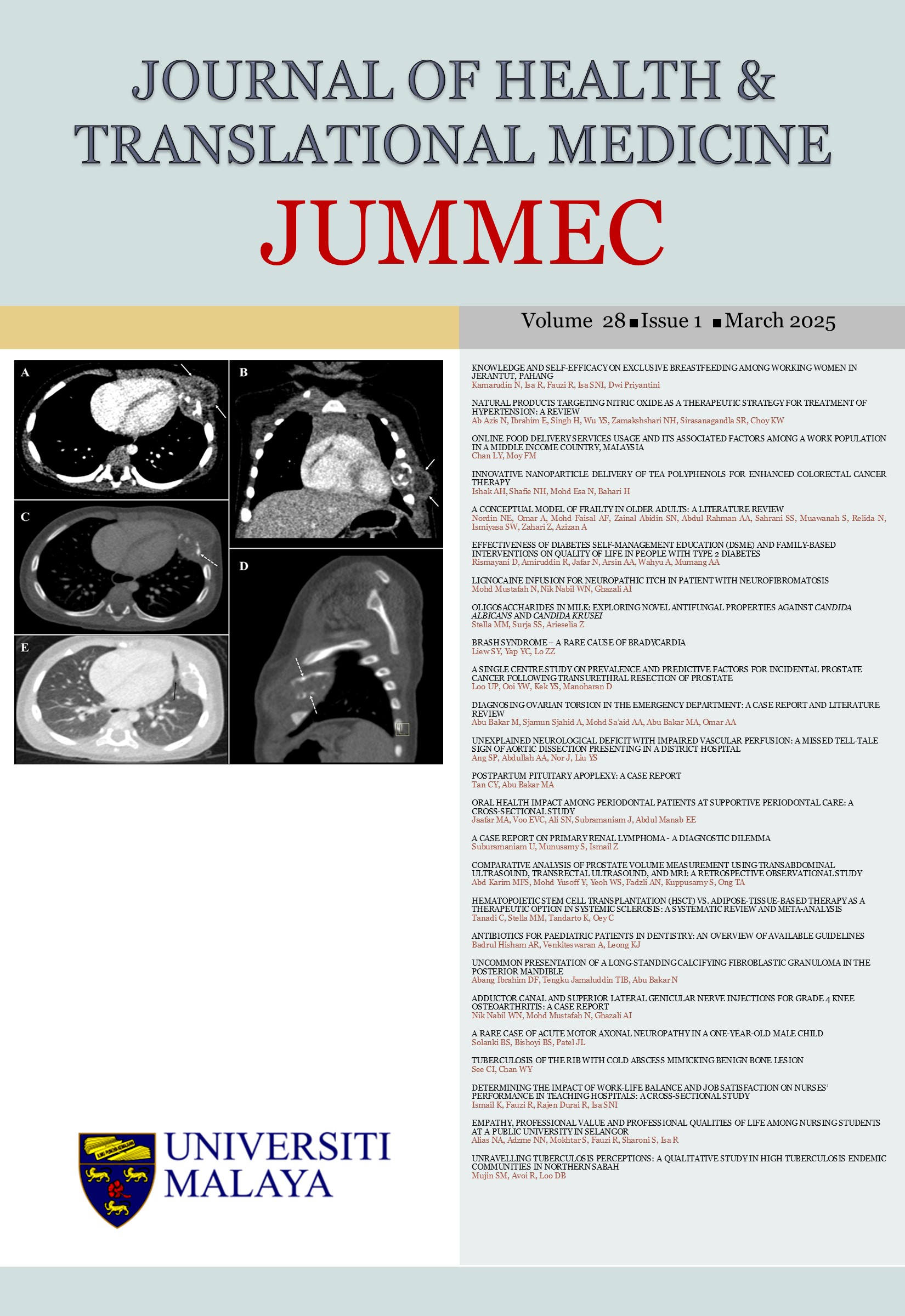ONLINE FOOD DELIVERY SERVICES USAGE AND ITS ASSOCIATED FACTORS AMONG A WORK POPULATION IN A MIDDLE INCOME COUNTRY, MALAYSIA
Received 2023-10-06; Accepted 2024-05-08; Published 2025-01-02
DOI:
https://doi.org/10.22452/jummec.vol28no1.3Keywords:
Online food delivery services, food delivery, public healthAbstract
Online food delivery services (OFDS) are popular due to its availability and convenience. However, OFDS with increasing food availability and choice, and decreasing barriers to food consumption effort may potentially lead to adverse health outcomes such as overweight/ obesity to the users, which is a public health challenge with increasing prevalence worldwide. Therefore, we aimed to determine the frequency and patterns of OFDS usage and its associated factors (socio-demographic characteristics, weight status and health literacy (HL)) among workers. This was a cross-sectional study conducted among civil servants in Peninsular Malaysia. Data collected were socio-demographic characteristics, body mass index (BMI), levels of HL, frequency and patterns of OFDS usage. There were 656 participants with a mean age of 39 (± 6.9) years who were mostly Malays (79.4%) and females (76.4%). The average frequency of OFDS usage was seven times a month with local food being the most frequently ordered type of food (50.3%). Furthermore, coffee and sugar-sweetened beverages (SSBs) were the common types of drinks frequently ordered along with meals. Price was the most important factor (92%) when making food choices. Factors associated with frequent OFDS usage were Malay ethnicity (aOR: 1.78; 95% CI: 1.16, 2.73), high monthly household income (aOR: 2.71, 95% CI: 1.48, 4.97) and age, where the younger the age group, the higher the adjusted odds ratio for its use when compared to the oldest age group. However, there were no associations between frequent OFDS usage with overweight/ obesity and low HL levels. Besides, education levels and occupation were also not associated with frequent OFDS usage. This study contributes to limited studies on OFDS usage and its associated factors among the adult population in Malaysia. Future research could be carried out to explore the association of sociodemography, HL and body mass index among a more diverse Malaysian population.
Downloads
Downloads
Published
Issue
Section
License
All authors agree that the article, if editorially accepted for publication, shall be licensed under the Creative Commons Attribution License 4.0 to allow others to freely access, copy and use research provided the author is correctly attributed, unless otherwise stated. All articles are available online without charge or other barriers to access. However, anyone wishing to reproduce large quantities of an article (250+) should inform the publisher. Any opinion expressed in the articles are those of the authors and do not reflect that of the University of Malaya, 50603 Kuala Lumpur, Malaysia.


